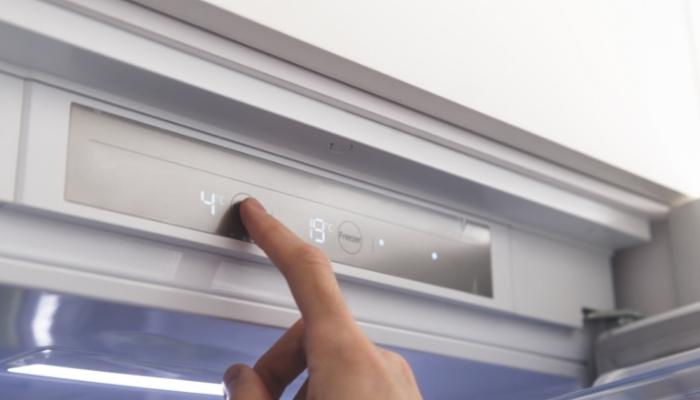Perhaps the refrigerator is not the first appliance you think of when it comes to curbing your energy use, but it is critical that you reassess how you use it — especially during the summer months.

If your appliance is over 15 years old, you might want to consider shopping for a new refrigerator, as Energy Star® certified models have become more widely available. While the initial cost for a newer unit may be high, you will save more money in the long run when it comes to energy use. Here are other ways you can protect your refrigerator from overworking.
1. Close that door!
When it comes to refrigerators, the easiest and most obvious way to ensure yours will use less energy is to avoid standing in front of an open appliance for a prolonged period. When you open the fridge or freezer door, cold air escapes, and the longer you dawdle, the more energy that is required to restore the interior temperature to the intended setting. Making decisions before cracking open your fridge or freezer allows you to limit the number of times you open these compartments daily.

2. Avoid heat
When your refrigerator is located near heat sources, the compressor kicks things into high gear to keep your foods perfectly chilled. Not only does this force your refrigerator to work harder, but it also results in a needless waste of energy. To prevent it from working in overdrive, it is wise to keep your refrigerator away from direct sunlight. For the same reasons, when you are designing your kitchen, install your refrigerator away from your cook station and any appliances that may emit high levels of heat. We also recommend allowing your leftovers to cool before putting them in the fridge. The idea behind this is that you would be reducing the amount of heat being added to the fresh-food compartment. While this solution seems like it’ll leave a small impact, you won’t think so after seeing your next bill.
3. Check the seal
Also called a “gasket,” the rubber seal around the frame of the fridge door prevents warm air from coming through the fresh food and freezer compartments. As this critical component starts breaking down, your unit will be working even harder to keep your foods chilled or frozen, which ultimately means higher energy bills — not to mention a shorter refrigerator lifespan.

It is common for the gaskets to lose some of their suction as the compartments are frequently accessed over time. Be sure to replace your refrigerator gaskets if they are torn or weakened.
4. Make a habit of cleaning up often
When your items are easy to find in your fridge, you can spend less time with the door open, ultimately reducing the amount of energy you use. As you’re re-organizing and throwing things out, you should also consider having fewer items on the top shelf of your refrigerator, especially large items, like pizza boxes, loaves of bread, and serving dishes. Since this is a highly accessible spot, we recommend reserving the top shelf for foods and ingredients you reach for the most often — the easier they are to grab, the quicker the door can be closed. In addition, larger objects stored at the top may trap heat inside of your unit, which would force your compressor to work harder.
5. Manually set the internal temperature
For your unit to provide the greatest efficiency for your family, set your refrigerator temperature to between 2°C-3°C and the freezer to between -17°C to -15°C. If your fridge does not display the exact temperature, setting the dial to the midpoint temperature usually does the trick.

6. Reduce frost buildup
Depending on your refrigerator, you may need to manually defrost it. Ice buildup can accumulate on the coils inside of your refrigerator, forcing your unit to work overtime. If you do not regularly defrost your refrigerator and freezer, it may be difficult for the appliance to maintain cooler temperatures. That said, automatic defrost comes standard in modern refrigerators.
7. Spend a little to save a lot
Since it comes down to limiting the number of times you open your appliance to preserve the interior temperature, we recommend shelling out on a refrigerator with a glass panel — checking if you’re running out of milk is easier than ever, as you can make your shopping list without opening the doors!
Alternatively, you might consider a smart refrigerator with interior cameras so you can view the contents from your smartphone while you’re at the grocery store.
With name-brand kitchen appliances priced for every budget, we have something for everyone — including unmatched customer service. Shop our home appliances today! As always, our experts are always happy to help, whether you call or visit us in-store.
